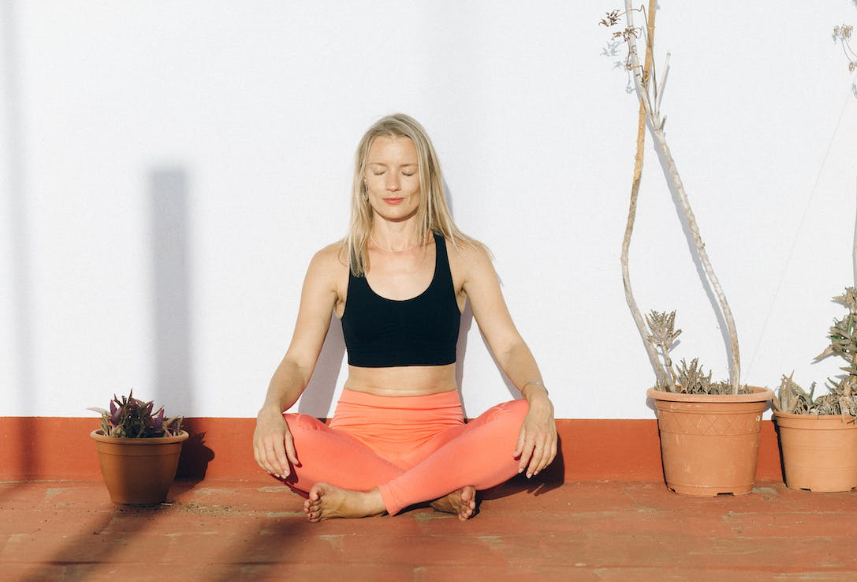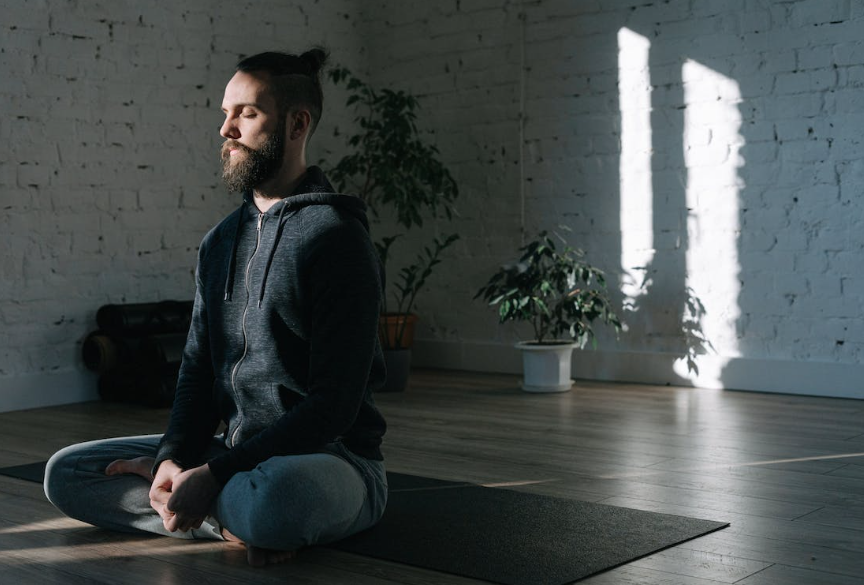What are Mindfulness Techniques
If you’ve heard of or read about mindfulness also known as mindfulness you might be curious about how to practice it. Find out how to do mindfulness techniques and how they might benefit you.

Selfpause Affirmation App
Download the app to get 1,000’s of affirmation meditations and everything you need to write, record and listen to your own.
Mindfulness techniques work by preventing the mind from wandering. These thoughts keep us from living in the present moment, and can affect our energy and mood. When we are aware of our thoughts, we can change them, and a mindfulness technique can help us achieve this. Here are some techniques you can try: Meditation, Guided readings, and Breathing exercises.
Meditation

Meditation techniques are practices that are designed to bring us into a more relaxed state. These techniques focus on our breathing and allow us to experience the flow of oxygen throughout our body. They can help us cope with stress and refocus on the present moment. Practicing these techniques can help you improve your mental and physical health.
Practicing mindfulness increases your capacity for positive thinking, which in turn can help you deal with stress in a more positive way. Stress impairs the immune system and makes a number of health problems worse. Being more mindful can lower our stress response and help us live a more fulfilling life. Meditation also helps us create stronger and deeper connections with others, which improves our ability to live a happy and balanced life.
There are several different meditation techniques you can practice in order to increase your awareness of your thoughts. One of these is body scan meditation, in which you focus on the different parts of your body, beginning from your toes and moving to your head. These techniques may be difficult at first, but with gentle persistence, you can learn to become aware of your thoughts.
Mindfulness involves being aware of your feelings, thoughts, and surroundings. Try to set a regular time each day to focus on being mindful, and try different things to practice. This will help you to notice things around you in a new way. But some people find it difficult to practice mindfulness because their minds wander or they get distracted. That’s why it is important to find a meditation technique that is compatible with your goals.
Research on mindfulness meditation has shown that it increases brain function. It improves focus and increases gray matter, a layer in the brain that contains neurons. It also improves learning, memory, and emotion regulation. In addition, mindfulness meditation has been shown to improve overall health and reduce stress levels. There are many benefits to practicing this technique, and it is a wonderful way to start a new healthy habit.
Although it may seem intimidating, these techniques can make a big difference to your overall health. Practice them regularly and you’ll soon see a difference. Just remember that meditation takes time to master, so patience is required. Try experimenting with various techniques until you find a meditation technique that works best for you.
Breathing exercises

One of the best and most straightforward ways to start meditating is through breathing exercises. These simple practices focus on the way you breathe and the feelings that accompany it. Breathing is a natural part of life that we all do, even if we don’t notice it. We are conditioned to breathe, and our bodies have learned to do it since birth. However, we rarely pay attention to our breath, and this practice can help us become more aware of it.
Students often find it difficult to concentrate when they are trying to focus on their work, but breathing exercises can help them to concentrate on their work without distractions. They can even benefit their health by improving their mental state, and just five minutes a day can make a significant difference. They are a great way to reduce stress and improve overall mood.
To begin a mindfulness breathing exercise, sit comfortably and place your hands around your mouth. Inhale deeply through the nose and exhale through your mouth. When you breathe out, imagine you’re blowing a shimmering bubble that carries your stress away. Hold these bubbles for a few seconds and gently sway your hands as you release.
Breathing exercises are a useful tool to reduce stress and increase focus on exams. Students should breathe twice as long as they take in, and hold for three seconds. Then, when they’re finished, they can move on to discussing the topic. This exercise has been proven to help de-escalate conflict and tension in students.
Breathing exercises are great for any time of the day. They’re simple to do and will help you relax and wind down. To start a breathing exercise, sit quietly somewhere quiet. Close your eyes and focus on your breathing. Close your eyes and imagine a relaxing color as you exhale.
Breathing exercises can be extremely beneficial to your mental and physical health. Several studies have proven that they help reduce stress and improve relaxation. Many yoga and meditation practices use breathing exercises as part of their routines.
Guided readings

The guided readings are one of the many mindfulness techniques that can help you improve your meditation practice. These techniques are often used in yoga nidra and meditation, and can help you relax and focus on your breathing. These techniques can also help you cope with stressful situations and improve your immune system.
The first step in practicing mindfulness is to become aware of your own thoughts. To do so, focus on your breathing, then notice your body sensations and thoughts. Try to resist the urge to label or judge your thoughts, and simply be aware of them. If distractions distract you, acknowledge them and move gently into a comfortable sitting position.
Another activity for young learners is a game called “What Are You Doing?” that helps students be more aware of their actions. A family can participate in this activity together, helping students understand their own emotions and those of others. The Mindful or Unmindful Worksheet helps students understand the difference between mindfulness and non-mindfulness.
Mindfulness techniques are particularly beneficial for those on the mental health spectrum. They can help manage their emotions, while teaching them to be more present in the moment. They can also help patients improve their self-confidence and balance their lives. They can even help patients cope with difficult situations in life. These techniques can help patients improve their self-esteem by teaching them how to say no, which helps them find a balance in their lives.
Mindfulness scripts can be useful for parents who want to help their children learn meditation. They can be age-appropriate and can help parents bring peace and presence into their children. Taking mindfulness into the workplace can also reduce stress and improve employee wellbeing. Some corporate leaders or human resource professionals may choose to be trained to lead meditation sessions in their organization. Guided readings can help them learn how to meditate and promote a healthy work environment.
Simple Habit offers mindfulness meditations

Simple Habit is an app that offers guided meditations in five-minute audios. It’s designed to fit the busy lifestyles of modern day individuals. The app features a variety of guided meditations, including Full Body Relaxation, Practice Gratitude, and Calm The Buzzing Mind. It also allows users to save their favorite meditations and set timed reminders to remind them to meditate.
Mindfulness meditations can improve your concentration, creativity, and compassion. The simple process of focusing on your breathing can help you calm your mind and improve your mood. You can download the app from the App Store or the Play Store for free. If you prefer a paid subscription, you can also purchase individual sessions from Simple Habit.
Another popular app is Calm, which provides a range of guided meditations. You can check in with the app to see how you’re feeling each day, and then choose one of the daily practice sessions. In the Daily Practice section, you can select a session by duration, or choose a quick and easy one. There’s even a section for children.
Mindfulness meditations can help you deal with situations that cause you distress. You can choose a short session that’s suitable for a specific situation, like pre-interview jitters or writer’s block. You can also practice meditation whenever you have time. However, you must make sure that you practice mindfulness meditations regularly to reap the benefits.
The app has several features to improve focus. You can choose from a series of meditations that range from three minutes to an hour long. In addition, you can choose what emotions you’d like to meditate about and select the level of assistance you need. The app has a 4.7 star rating on Apple’s App Store and more than 25,000 reviews. Many users comment on its flexibility and consistency and praise the app’s variety of meditation tracks. However, some reviewers criticize the lack of content in the free version.
Our Top FAQ's
Mindfulness techniques involve paying attention to the present moment in a nonjudgmental way. This can be done through practices such as meditation, deep breathing, or focused attention on sensory experiences. The benefits of mindfulness techniques include improved mental and physical well-being, increased focus and concentration, and reduced stress and anxiety.
Mindfulness techniques can be practiced by anyone, regardless of age or background. There is no specific prerequisite for starting to practice mindfulness, and it can be adapted to fit the needs and preferences of individual practitioners.
There are many ways to incorporate mindfulness techniques into daily life. Some common techniques include setting aside dedicated time for mindfulness practice, such as through daily meditation or yoga, or bringing mindfulness into everyday activities such as eating, walking, or exercising. It is also possible to cultivate mindfulness in relationships and interactions with others through practices such as active listening and empathy.
While mindfulness techniques are generally considered safe and beneficial, it is possible for some individuals to experience discomfort or distress during or after practice. This is usually a temporary reaction and can be addressed by speaking with a trained professional or adjusting the intensity of the practice.
Mindfulness techniques have been shown to be effective in treating a range of mental health concerns, including anxiety, depression, and stress. Research has also suggested that mindfulness practices may be helpful in managing physical health conditions such as chronic pain and high blood pressure. However, it is important to note that mindfulness techniques should not be used as a replacement for professional treatment and should be practiced under the guidance of a trained healthcare professional.
